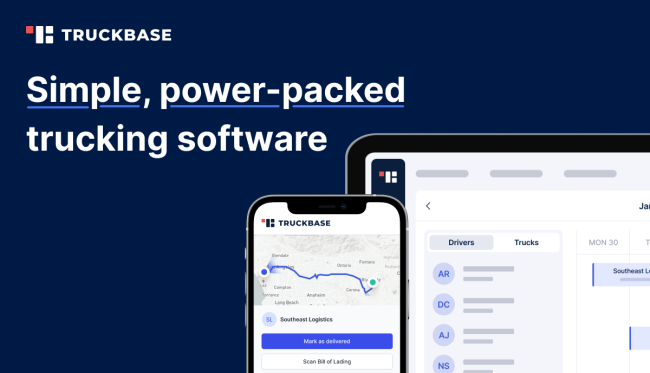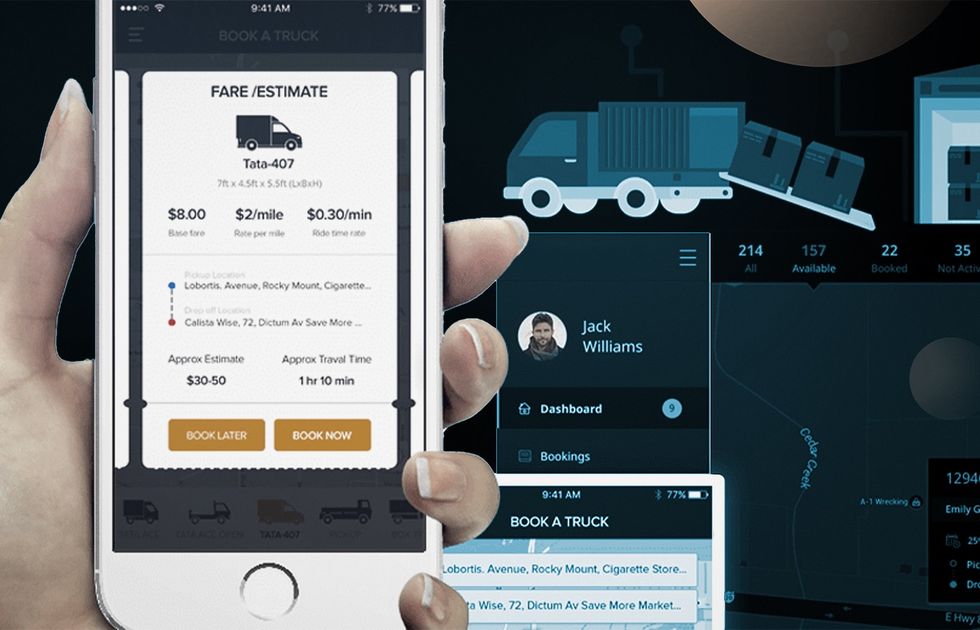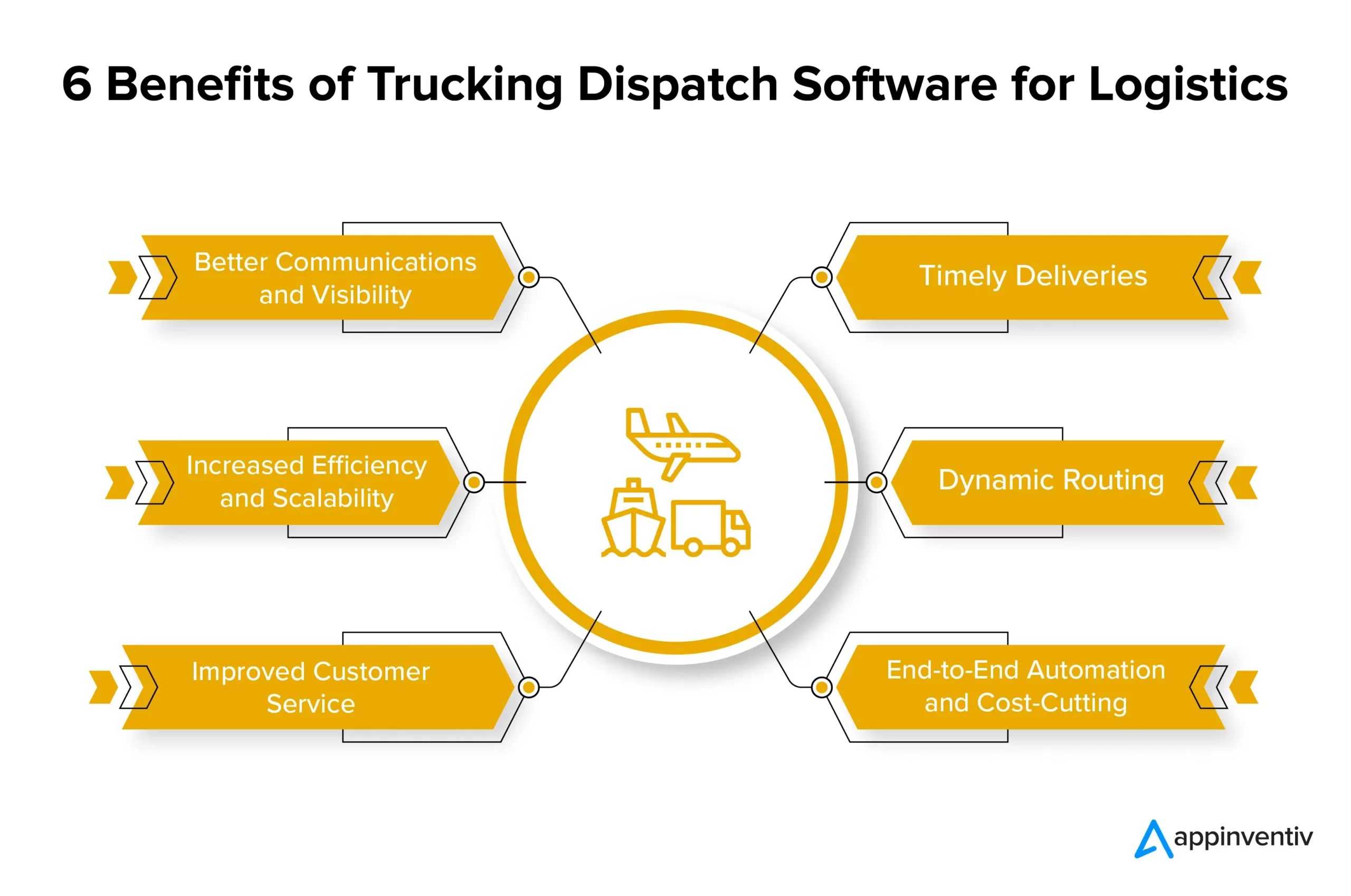Implementing trucking dispatch software involves carefully tracking and scheduling truck drivers’ shifts, planning their routes, and collecting data to optimize future routes. Efficiently managing a fleet of trucks can be a complex process, but with the help of trucking dispatch software, managers can streamline operations and maximize productivity.
This digital solution is designed to track and schedule truck drivers’ shifts, plan their routes, and collect valuable data for optimizing future routes. By implementing trucking dispatch software, companies can ensure timely deliveries, monitor driver progress using GPS tracking, and make necessary adjustments as needed.
We will explore the essential steps for successfully implementing trucking dispatch software, enabling businesses to improve efficiency, reduce costs, and provide exceptional service to their customers. So, let’s dive in and take a closer look at these vital steps.

Credit: appinventiv.com
Understanding Trucking Dispatch Software
Implementing trucking dispatch software involves essential steps such as tracking and scheduling drivers’ shifts, planning routes, and collecting valuable data for optimizing future routes. It is a digital solution designed to streamline trucking operations and improve overall efficiency.
What Is Trucking Dispatch Software?
Trucking dispatch software is a digital solution designed to help managers track and schedule their truck drivers’ shifts, plan their routes, and track their journeys while collecting valuable data to optimize future routes.
Choosing The Right Trucking Software
When it comes to choosing the right trucking software for your business, it’s important to consider a few key factors. Firstly, assess your business requirements and identify the features that are essential for your operations. Secondly, take into account the scalability of the software to ensure it can accommodate your future growth. Lastly, carefully consider the budget and cost-effectiveness of the software to ensure it aligns with your financial goals.
Benefits And Features Of Custom Truck Dispatch Software
Custom truck dispatch software offers numerous benefits and features that can streamline your operations and enhance efficiency. Some key benefits include:
- Improved fleet management through real-time tracking and monitoring.
- Enhanced route planning and optimization to reduce fuel costs and drive time.
- Automated scheduling and dispatching for smoother operations.
- Integration with GPS technology for accurate location tracking.
Additionally, custom truck dispatch software often offers features such as:
- Driver performance tracking and evaluation.
- Load management and optimization.
- Electronic proof of delivery.
- Customer relationship management (CRM) integration.
In conclusion, understanding trucking dispatch software is crucial for improving the efficiency and effectiveness of your trucking operations. By choosing the right software and leveraging its benefits and features, you can optimize your business processes, improve customer service, and ultimately drive success in the highly competitive trucking industry.
The Process Of Implementing Trucking Dispatch Software
Implementing trucking dispatch software involves several essential steps. First, managers need to carefully select a reliable software solution that meets their specific needs. Then, they should train their staff on how to use the software effectively. Next, they should customize the software to fit their workflows and integrate it with other systems if needed.
After that, thorough testing should be conducted to ensure proper functionality. Finally, the software can be deployed and continuously monitored for any necessary adjustments.
Dispatching Drivers And Vehicles
Dispatching drivers and vehicles is a crucial step in implementing trucking dispatch software. It involves efficiently communicating routes and any other relevant information to the drivers, ensuring the smooth flow of operations. Here’s how you can streamline this process:
- Use the software to assign drivers to specific shipments or routes.
- Send automated notifications and instructions to drivers, directly through the software.
- Monitor the availability and status of drivers and vehicles in real-time.
- Ensure drivers have access to detailed instructions, including pickup and delivery addresses, special instructions, and any necessary documentation.
By implementing these steps, you can enhance communication, improve efficiency, and minimize errors in the dispatching process.
Monitoring Progress And Making Adjustments
Monitoring the progress of drivers and vehicles is essential for effective trucking dispatch. With the right software in place, you can track the real-time location of each driver, monitor their performance, and make necessary adjustments when needed. Here’s how you can do it:
- Utilize GPS tracking technology to monitor the exact location and progress of each driver and vehicle.
- Receive automatic status updates from drivers, allowing you to stay informed at all times.
- Analyze collected data to identify any deviations from planned routes or delays.
- Implement proactive measures to address issues, such as reassigning drivers or adjusting routes.
By closely monitoring progress and promptly making adjustments, you can ensure timely delivery, improve customer satisfaction, and optimize overall efficiency.
Testing And Deploying Custom Truck Dispatch Software
The final step in implementing trucking dispatch software is testing and deploying custom software solutions tailored to your business needs. This stage verifies the software’s functionality, compatibility, and usability. Follow these steps to successfully test and deploy your custom truck dispatch software:
- Perform comprehensive testing to validate that all features and functionalities work as intended.
- Ensure compatibility with existing systems, such as fleet management or CRM software.
- Pilot the software with a small group of drivers to gather feedback and identify any potential issues.
- Address and rectify any bugs or user experience obstacles before full deployment.
- Train your staff on how to effectively use the software, maximizing its benefits.
By undergoing thorough testing and successful deployment, you can optimize the efficiency of your trucking dispatch operations and seamlessly integrate the custom software into your daily workflow.
Beginner’s Guide To Trucking Dispatch Software
Trucking dispatch software is a powerful tool that can streamline your operations and boost efficiency. Whether you’re a beginner in the trucking industry or an experienced professional looking to optimize your dispatch process, this beginner’s guide will provide you with valuable insights on how to implement trucking dispatch software effectively. In this guide, we’ll cover the key features, core benefits, and top considerations for choosing the right trucking dispatch software for your needs.
Key Features Of Trucking Dispatch Software
- Scheduling and route planning: Easily create and manage driver schedules, assign routes, and optimize dispatch based on real-time traffic information.
- Communication tools: Streamline communication between dispatchers and drivers through in-app messaging or notifications to ensure seamless coordination.
- Real-time GPS tracking: Track the location of your trucks in real-time to provide accurate ETAs and effectively respond to any unexpected changes.
- Automated task management: Automate routine tasks such as load assignment, order tracking, and document management to save time and reduce human error.
Core Benefits Of Trucking Dispatch Software
- Improved efficiency: By automating manual processes and enabling real-time communication, trucking dispatch software helps you optimize routes, reduce idle time, and increase overall productivity.
- Enhanced customer service: With accurate ETAs, real-time updates, and improved visibility into delivery status, you can provide better customer service and reduce customer inquiries.
- Cost savings: By optimizing route planning, reducing fuel consumption, and minimizing driver idle time, trucking dispatch software can help you lower operational costs and increase profitability.
Top Considerations For Choosing Trucking Dispatch Software
- Scalability and customization: Ensure that the software can accommodate your business’s growth and offers customizable features to meet your unique needs.
- User-friendly interface: Look for a user-friendly interface that is intuitive and easy to navigate, so your team can quickly adapt to the software without extensive training.
- Integration capabilities: Check if the software seamlessly integrates with your existing systems, such as accounting software or GPS tracking tools.
- Data analytics and reporting: Choose a software that provides valuable insights and analytics, enabling you to make data-driven decisions and identify areas for improvement.
By considering these key features, core benefits, and top considerations, you can confidently choose the right trucking dispatch software for your business. Implementing trucking dispatch software can revolutionize your operations and drive your business towards increased efficiency and success.
Must-have Features For Trucking Dispatch Software
Centralized Dispatching
Centralized dispatching is a crucial feature of trucking dispatch software. It allows dispatchers to have a comprehensive view of all their truck drivers and their activities in one central dashboard. With this feature, dispatchers can easily assign and manage jobs, track real-time locations, and communicate with drivers seamlessly. By streamlining and centralizing the dispatching process, trucking companies can improve efficiency, reduce errors, and ensure better coordination between drivers and dispatchers.
Scheduling And Route Optimization
Scheduling and route optimization are vital components of trucking dispatch software. This feature enables dispatchers to create efficient schedules for drivers, taking into account factors such as driver availability, load capacity, and customer requirements. With route optimization algorithms, the software can suggest the most optimal routes, considering factors like traffic, fuel efficiency, and delivery time windows. By automating the scheduling and route planning process, trucking companies can save time, reduce fuel costs, and improve on-time delivery performance.
Streamlining Trucking Operations
Streamlining trucking operations is another essential feature of effective dispatch software. It includes features like digital load boards, electronic proof of delivery, and real-time analytics. Digital load boards facilitate quick and efficient load matching, helping carriers optimize their capacity utilization. Electronic proof of delivery eliminates the need for paper-based documentation, reducing administrative work and improving turnaround time. Real-time analytics provide valuable insights into driver performance, fuel consumption, and other key metrics, enabling companies to make data-driven decisions and continuously improve their operations.
Finding Reliable Truck Dispatching Services
Implementing trucking dispatch software is an essential step to finding reliable truck dispatching services. With this digital solution, managers can effectively track and schedule truck drivers’ shifts, plan routes, and collect valuable data to optimize future journeys. Improve efficiency and streamline operations with trucking dispatch software.
Finding reliable truck dispatching services is crucial for the successful implementation of trucking dispatch software. A reliable service provider can ensure seamless communication and coordination between drivers, dispatchers, and management, leading to improved efficiency and productivity. Here are some key steps to consider when selecting a truck dispatching service provider to ensure a smooth and effective implementation.Selecting The Right Truck Dispatching Service Provider
When it comes to selecting the right truck dispatching service provider, there are a few important factors to consider. 1. Reputation: Look for a service provider with a strong reputation in the industry. Read reviews, testimonials, and case studies to gauge their track record of customer satisfaction and reliability. 2. Experience: Choose a provider with experience in the trucking industry. They should have a deep understanding of the unique challenges and requirements of the industry, which will enable them to provide tailored solutions. 3. Scalability: Ensure that the service provider can accommodate your business’s needs as it grows. Scalability is essential to ensure that the dispatching software can handle increasing volumes of data and transactions without compromising performance. 4. Integration Capabilities: Check if the service provider offers seamless integration with your existing systems and technology. This will enable a smooth and hassle-free transition to the new dispatching software. 5. Support and Training: Verify that the service provider offers comprehensive support and training to help your team adapt to the new software. Adequate training and support will ensure a successful implementation and minimize downtime.Benefits Of Implementing Trucking Dispatch Software
Implementing trucking dispatch software offers numerous benefits to businesses in the transportation industry. Here are some key advantages: 1. Improved Efficiency: Truck dispatching software automates many manual tasks, such as route planning, scheduling, and tracking. This streamlines operations and improves overall efficiency, reducing the time and effort spent on administrative tasks. 2. Real-Time Visibility: With truck dispatching software, you can have real-time visibility into your fleet’s location, status, and performance. This allows for better monitoring, quick decision-making, and proactive problem-solving. 3. Optimal Route Planning: The software’s route optimization capabilities help identify the most efficient routes for your drivers, taking into account factors like traffic, weather, and fuel efficiency. This reduces travel time, fuel costs, and improves customer satisfaction. 4. Enhanced Communication: Effective communication is essential in the trucking industry. Dispatching software enables seamless communication between dispatchers and drivers, facilitating clear instructions, updates, and problem resolution. 5. Accurate Data Analysis: Dispatching software collects valuable data about driver performance, route efficiency, and delivery times. Analyzing this data provides insights into areas for improvement and helps make data-driven business decisions. By following the key steps mentioned above and selecting a reliable truck dispatching service provider, businesses can ensure a successful implementation of trucking dispatch software. The benefits of implementing such software can result in improved efficiency, better decision-making, and overall enhanced operations for the transportation industry.
Credit: www.ttnews.com

Credit: acropolium.com
Frequently Asked Questions Of Essential Steps For Implementing Trucking Dispatch Software
What Is Trucking Dispatch Software?
Trucking dispatch software is a digital solution that helps managers track and schedule truck drivers’ shifts and plan their routes. It also collects data to optimize future routes.
What Software Is Used For Trucking?
Trucking dispatch software is used to track and schedule truck drivers’ shifts, plan routes, and collect data for optimizing future routes.
What Is The Process Of Truck Dispatch?
Truck dispatch involves communicating routes and other information to drivers and sending vehicles out for delivery. GPS tracking is used to monitor progress and make adjustments as needed for timely delivery. Trucking dispatch software helps managers track drivers, schedule shifts, plan routes, and collect data for future optimization.
What Is The Best Dispatching Software?
Trucking dispatch software is a digital solution that helps managers track and schedule drivers’ shifts, plan routes, and collect data to optimize future routes. Some popular options include Connecteam, SafetyCulture, Truckadium, Matellio, TruckBase, Bringg, Velvetech, Cleveroad, and FarEye.
Conclusion
Implementing trucking dispatch software is crucial for streamlining operations and maximizing efficiency in the transportation industry. By following the essential steps outlined in this blog post, companies can effectively track and schedule drivers’ shifts, plan efficient routes, and collect valuable data for optimizing future operations.
With the right software in place, dispatchers can monitor progress in real-time, make timely adjustments, and ensure prompt and reliable deliveries. Investing in trucking dispatch software can significantly enhance productivity, reduce costs, and ultimately drive success in the ever-evolving logistics landscape.


